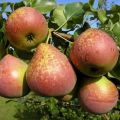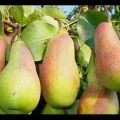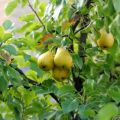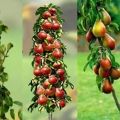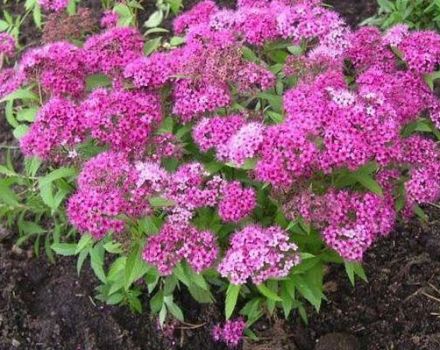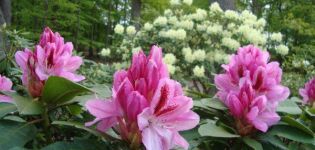Description and characteristics of the Moskvichka pear variety, planting and care
Pears have been cultivated in our country for a long time due to the mass of useful properties. From year to year, breeders are working to improve known species and offer worthy novelties to the attention of gardeners. One of them is the early autumn pear of the Moskvichka variety, which has enormous advantages over its competitors.
Description pear Moskvichka
The Moskvichka pear belongs to the early autumn varieties and begins to ripen in September. Differs in good frost resistance, is successfully grown in all regions of our country. The tree bears fruit abundantly and annually.The Muscovite is self-fertile, that is, for the formation of ovaries, pollinators must be planted nearby. The best varieties for this are recognized:
- Lada;
- Yakovlev's favorite;
- Moscow bergamot.
The first crop is harvested 3 years after planting on the seedling site. An adult tree is capable of producing up to 50 kg of fruit harvest.
Characteristics of trees and fruits
The tree of the Moskvichka pear is a standard tree, with an even and straight trunk. There are no side branches, a dense crown can be grafted or formed. The height of an adult pear reaches 3.5 meters. Skeletal branches are directed vertically.
Flowering starts late, because return frosts are not terrible for the future harvest.
The leaves of this variety have an oval shape, rich green color and small size. They are quite dense, but elastic at the same time. The flowers are cupped, small, collected in inflorescences of 5 pieces.
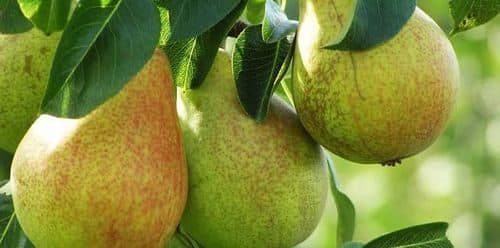
Moskvichka's fruits are medium, the weight of one of them can reach 130 grams. Their shape is wide, classic pear-shaped. During technical ripeness, pears acquire a yellow-green color, subcutaneous brown spots become visible. If the fruits are slightly overexposed on the tree, then a slight blush will appear on them. The pulp is very juicy, tasty, sweet, white. The aroma is strong, classic.
Breeding history and breeding region
The specialists of the Timiryazev Academy worked on the breeding of the Muscovite pear. They carried out free pollination of the no less famous Kieffer variety, and then grew seedlings on the basis of the obtained material. It was these young plants that became the basis for obtaining Moskvichka. In the 80s of the last century, the novelty has already begun to be mastered in the gardens of domestic summer residents. It was recommended for the Volga-Vyatka, Middle Volga and Central regions.However, most of all Muscovite fell in love with the residents of the Moscow region.
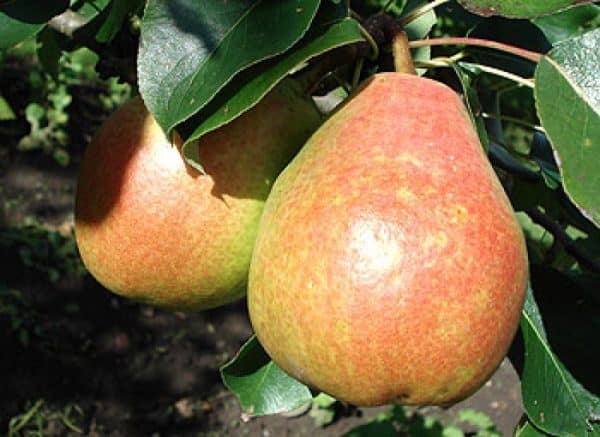
Pros and cons of the variety
Like any variety, Moskvichka has its own advantages and disadvantages that distinguish it from competitors. Positive qualities include:
- early ripening of fruits;
- dessert taste;
- early maturity;
- regular fruiting;
- high yield rates;
- fruits are not prone to shedding;
- excellent product characteristics;
- pleasant strong aroma;
- the crop is suitable for long distance transportation;
- the possibility of long-term storage of the harvested crop;
- increased resistance to common diseases;
- unpretentiousness.
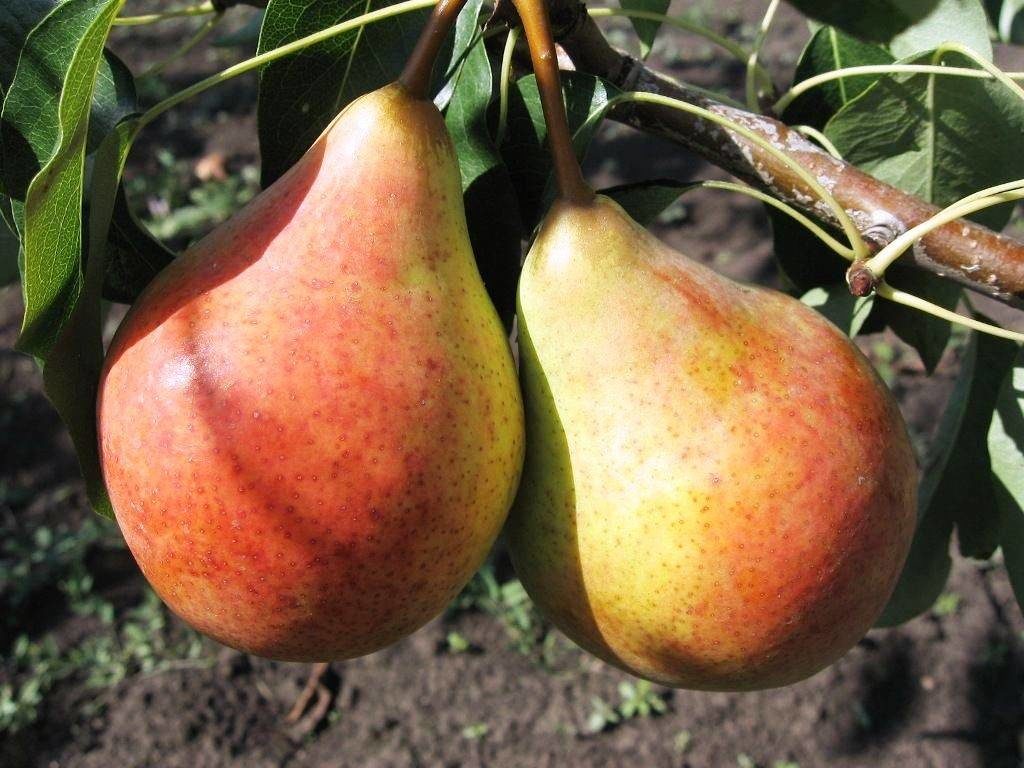
The disadvantages are:
- self-infertility;
- average frost resistance;
- low resistance to prolonged drought.
Landing features
The Moskvichka pear has planting features that you should familiarize yourself with before settling it on your site.
Choice of time and place
The Moskvichka pear can be planted both in autumn and spring. In the fall, planting work is planned for October, while trying to keep within from 10 to 20. In spring, the tree is planted from April to May, but the last decade of April is considered the best time for this.
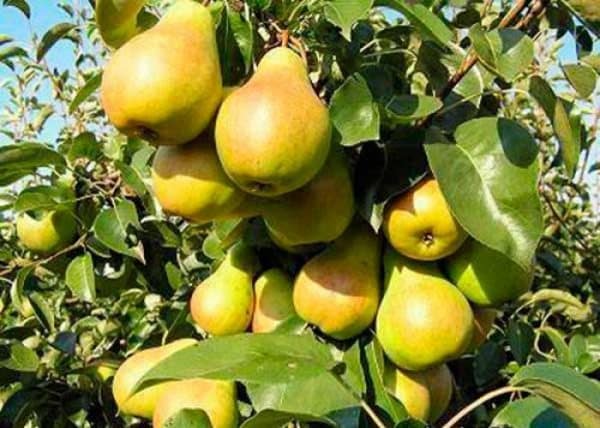
The advantage of spring planting is that the young seedling manages to take root over the summer and tolerates the winter cold well. When planted in autumn, the plant is more frost-resistant.Pears prefer loamy or sandy loamy chernozem soil. It should be loose, nutritious, with enough fertilizer. The place is chosen sunny, well-lit, dry.
Pit preparation
Before planting the seedling, the top soil layer 40 cm thick is removed, after which a hole is dug 0.8-1 m deep and about 0.8 m wide. A nutritious soil mixture is introduced into it, consisting of humus, sand, superphosphate, potassium sulfate, any organic matter. Dolomite flour is poured into the prepared hole in a ratio of 0.3 kg per 10 liters of water, and then 2 more buckets of clean water are poured.
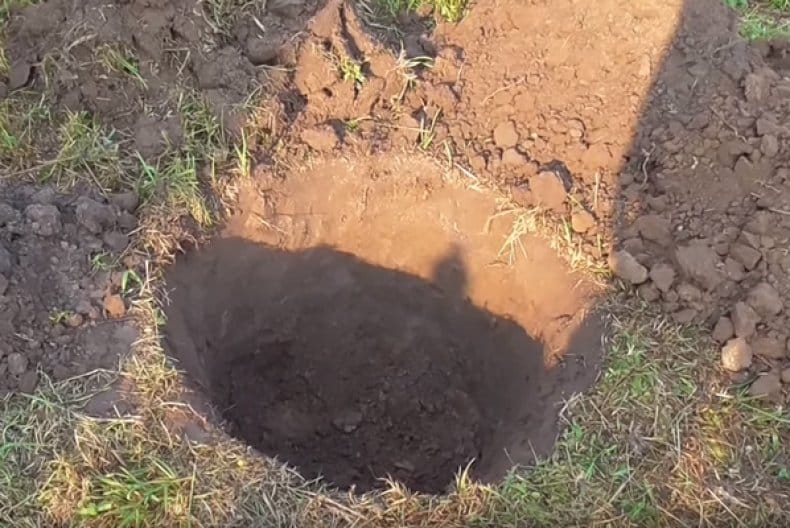
Distance between seedlings
A Muscovite is considered a medium layer, because the distance between seedlings is left equal to at least 3-3.5 meters. The same amount should be retreat to the nearest fruit bushes or trees.
Landing technology
A wooden peg is driven into the prepared hole, which rises above the surface by 0.5 m. At the bottom of the hole, a mound is formed from a nutritious soil mixture, placing a seedling root on it. The root neck of the pear should rise 5 cm above the surface of the earth. Gradually, the hole is filled with earth, tamping it a little and preventing voids from forming. 3 buckets of water are poured under each seedling, the soil around the pear is mulched, and the tree itself is tied to a peg.
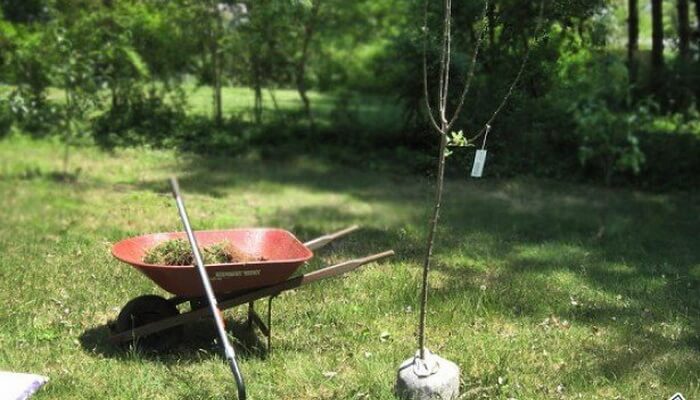
Tree care rules
In order for a planted plant to grow and develop normally, it must be properly looked after.
Watering and feeding
After planting, the Moskvichka pear requires watering once a week. 1 bucket of water is poured under 1 tree in the morning and evening hours. An adult plant during the formation of fruits requires irrigation up to 2 times a week. Water the pear before budding, 2 weeks after the end of flowering and 2 weeks before the start of fruit formation. If autumn is dry, then irrigation is carried out after harvest.

From dressings in the spring, ammonium nitrate is introduced into the trunk circle, and in the fall, superphosphate, compost, humus, potassium sulfate.
Trimming
Pruning is required for pears throughout the growing season. As a rule, work is carried out before bud break.
Shaping the crown of a pear Moskvichka
When pruning, it is imperative to maintain the position of the central shoot. Only skeletal branches are left, all the rest must be removed.The length of the main trunk is shortened by a quarter of the original.
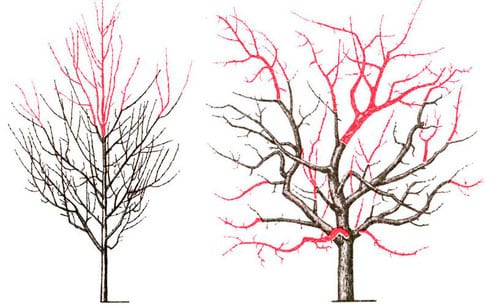
Regulatory trim
In the second year, after the formative pruning, the main trunk is shortened by another 25 cm. The length of the skeletal shoots is removed by 5 cm. The work can be carried out in autumn and spring.
Supportive pruning
Supportive pruning of the Moskvichka pear involves the removal of all growing new shoots that contribute to the thickening of the crown. Only a few fruit shoots should remain on each skeletal shoot... All branches growing in a strictly upright position are cut off.

Sanitary pruning
Sanitary pruning of pears is carried out both in autumn and spring. It involves removing all dry, damaged, diseased and broken branches.
Also, the shoots growing inside the tree are cut off.
Trimming rules
Do not remove too many branches at a time, as the pear may not be able to withstand such stress. This is especially true for anti-aging scraps. All cuts should be treated with garden varnish.
Diseases and pests of the pear Moskvichka
The Muscovite has increased resistance to major diseases and pests, but preventive measures will not interfere with her.

Preventive measures
As measures for the prevention of diseases and pests of pears, Moskvichka carry out rationing of watering, pruning in time, and treat the tree with specially designed preparations.
Possible diseases
Moskvichka has good immunity to fungal diseases, but some infections still carry a certain risk of damage.
Scab
For the prevention of scab, the pear is sprayed several times with Bordeaux mixture, iron or copper sulfate. It is necessary to remove foliage and remove weeds in a timely manner under the trees.
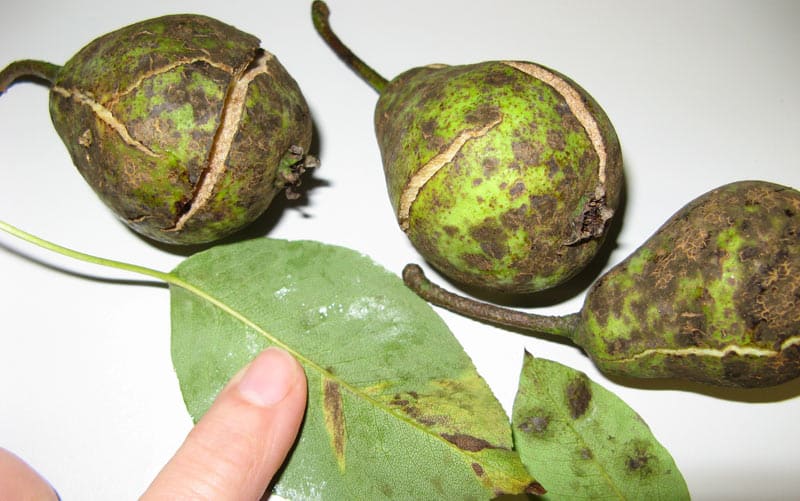
Sooty fungus
Another pear pest that can get you in trouble. To prevent its appearance, the Muscovite is sprayed with colloidal sulfur, copper sulfate. In especially severe cases, they resort to using the preparations "Skor", "Azofos", "Delan".
Probable pests
Pears can be a treat for some pests too. If you do not take action in time, you can be left without a crop.
Aphid
Kinmix, Iskra, Agravertin drugs help to resist aphids. Folk remedies are also effective: chamomile decoction and green soap.
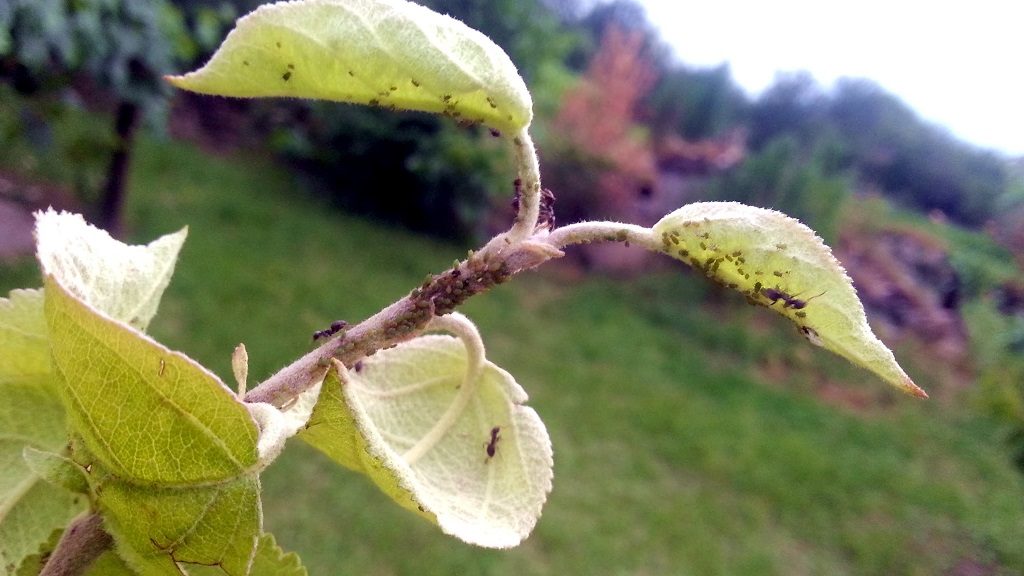
Pear moth
To prevent the moth to spoil the fruit, treat the pear with "Karbofos" or "Cyanox". From folk remedies use the infusion of tobacco dust and dandelion.
Pear flower beetle
They fight against this pest by treating Moskvichki with colloidal sulfur. Also used against pear flower beetle infusion of yarrow, chamomile, tobacco dust.
Collection, storage and use of crops
Moskvichka pears are harvested in September. They have a universal purpose, are suitable for long-distance transportation, have good marketability and keeping quality. This allows Moskvichka to be grown commercially.
For long-term fresh storage, the harvested pears are sorted out, laid in wooden boxes, layering newspapers, and sent to a dark, cool place.



